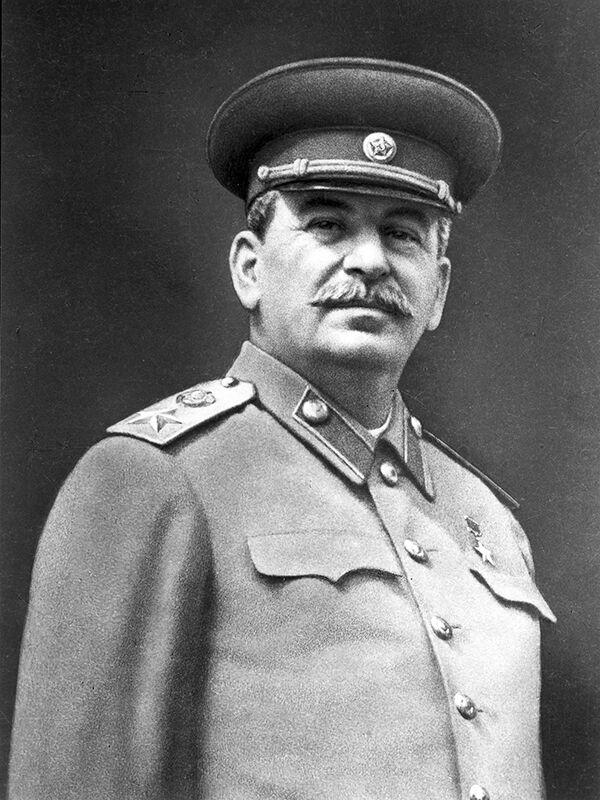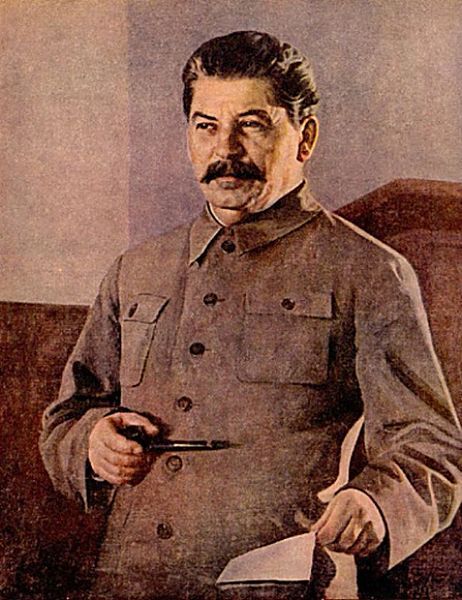Joseph Stalin was a Russian politician, revolutionary and dictator. He was a member of the Soviet Communist Party, the Bolshevik Party, and succeeded Vladimir IIich Ulyanov (Lenin) as leader of the USSR. The city of Stalingrad, now called Volgograd, was named in his honor.
During the Second World War, his position was ambivalent. First, he formed an alliance with Adolf Hitler to support Germany's conquest of Poland in 1939. Then, having been betrayed by Hitler, he changed sides and fought alongside the Allies until 1945. In the aftermath of the war, he closed his country's borders and established his dictatorial regime once and for all.
Stalin carried out several "purges" during which Russian citizens were imprisoned, exiled, deported, sent to forced-labor camps or executed. He is said to have been responsible for the deaths of some twenty million of his own people. As a result, he is best known for his great cruelty, but also for establishing his own vision of communist ideology (known as Stalinism), for his role in resolving the Second World War and for starting the Cold War.

Joseph Stalin in 1937

Joseph Stalin in 1939
-
1878: Iossif Vissarionovith Djougachvili was born around December 18, 1878, in Georgia. However, December 21, 1879 is also a possible date of birth.
-
1899: He is expelled from his seminary for failing an exam. From that moment on, he began to take part in revolutionary activities. He was deported several times to Siberia. It was at this time that he met Lenin.
-
1912: He takes the pseudonym Joseph Stalin, meaning "Man of Steel".
-
1922: Becomes General Secretary of the Bolshevik Party on April 3rd. At first, this new position had little influence within the party. Over the years, however, Stalin transformed it into one of the most important positions. From then on, he held enormous power in his hands.
-
1932: The USSR suffers a severe famine. In 1930, to stimulate the industrialization of the USSR, Stalin decreed the dissolution of the kulaks, a social class of wealthy peasants (farmers and agriculturists). In this way, the government recovered their wealth and financed the creation of factories in the cities. However, this measure and the resulting rural exodus led to a terrible famine two years later, with several million people dying. Another famine occurred in 1946.
-
1934: On December 1st, the Party Secretary is assassinated. Stalin immediately began the so-called Great Purge (or Great Terror) to eliminate all enemies of the people, be they politicians, soldiers, economists or artists. There were many purges during Stalin's dictatorship. The total number of victims of these purges varies widely, but is estimated at 9 million.
-
1939: Stalin signs the Treaty of Non-Aggression between Germany and the Soviet Union on August 23.
-
1939: On September 17, a few days after the outbreak of the Second World War, the Russian army invades Poland in support of German troops.
-
1941: Adolf Hitler breaks the Non-Aggression Treaty on June 22 by attacking the USSR. Refusing to believe the warnings of Winston Churchill and others, the Red Army was caught off guard. In the first few months, the USSR lost millions of soldiers. By early December, the Germans were only 22 km from the capital (Moscow). On December 6, the tide turns, and the Red Army regains control of the fighting.
-
1942: After the defeat of Moscow, Hitler changes his target and tries to seize the city of Stalingrad. A few months later, defeat was imminent for the Führer's army. This battle marks a turning point in the Second World War.
-
1945: World War II comes to an end in Europe. The Allied victory is largely due to the significant participation of the USSR and Stalin's decisions. More than 20 million Soviets died in the war. However, differences of opinion between Stalin and US President Franklin Delano Roosevelt created tensions between the two powerful countries. Later, these disagreements led to the Cold War (1947-1991).
-
1953: Joseph Stalin dies in Moscow on March 5.